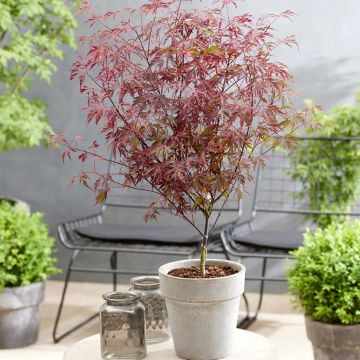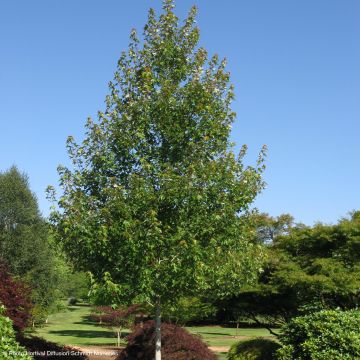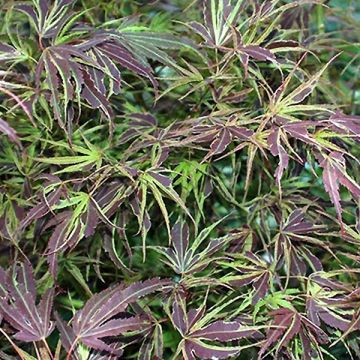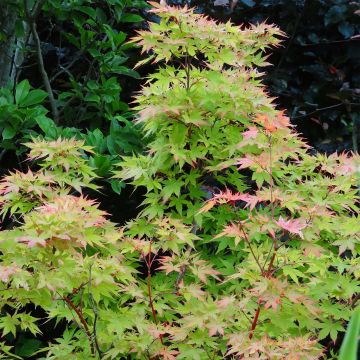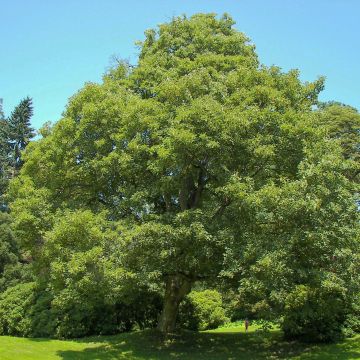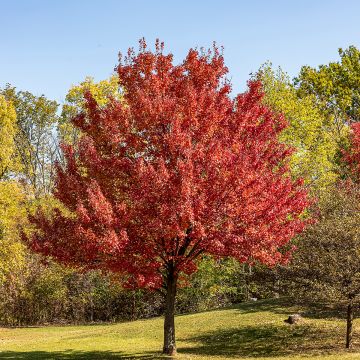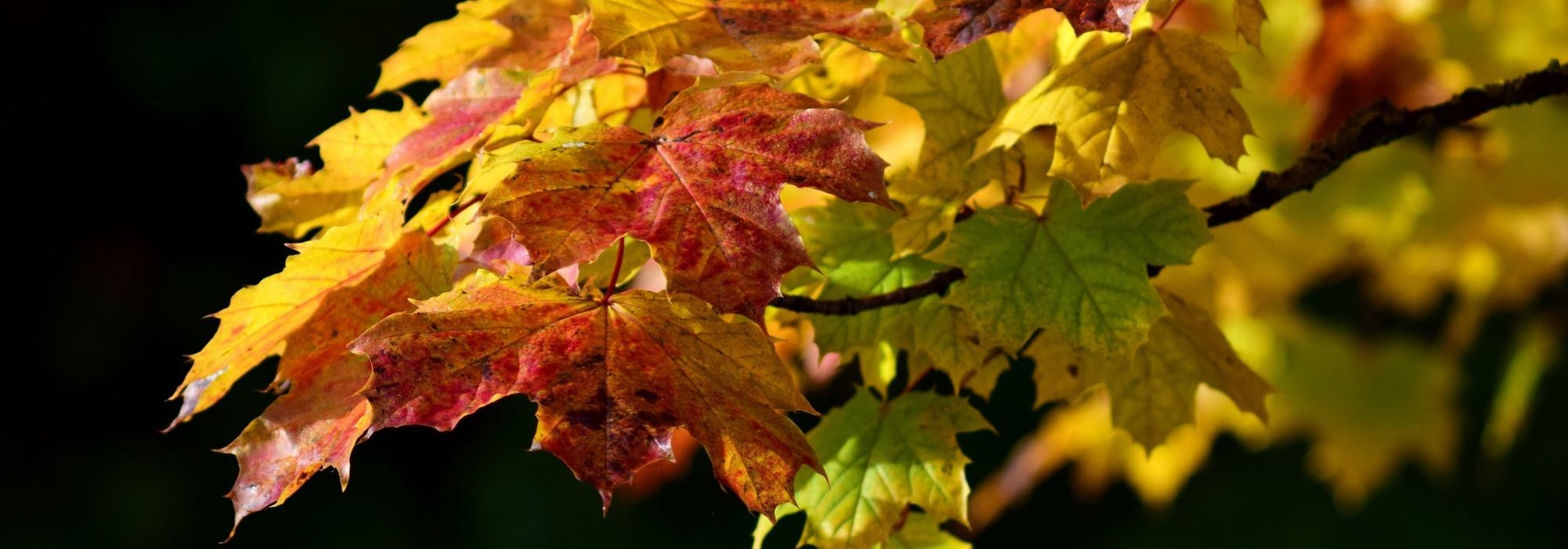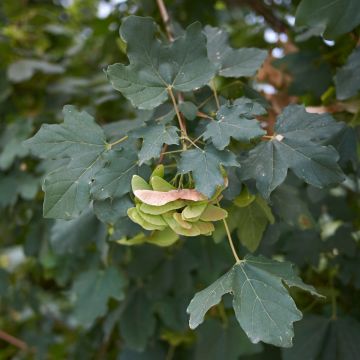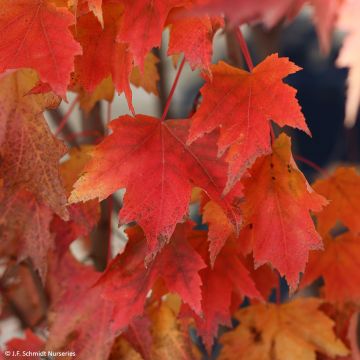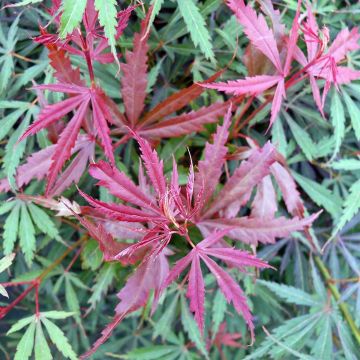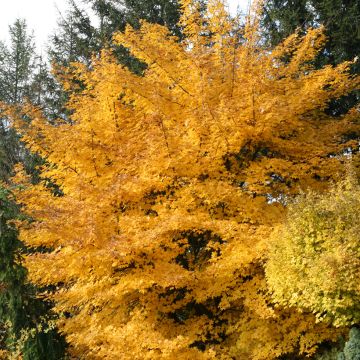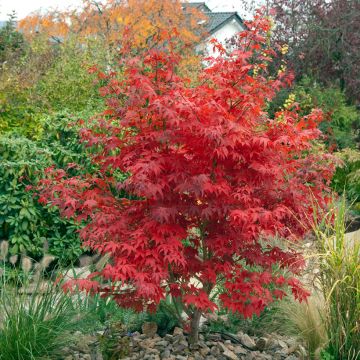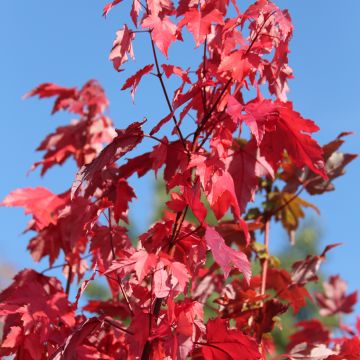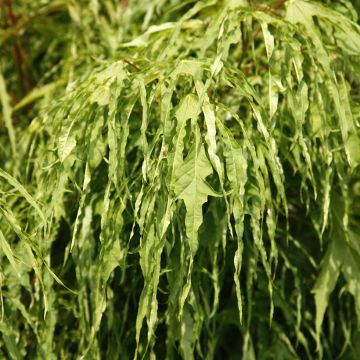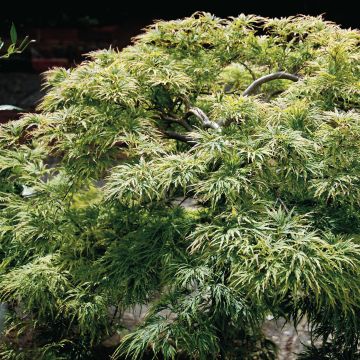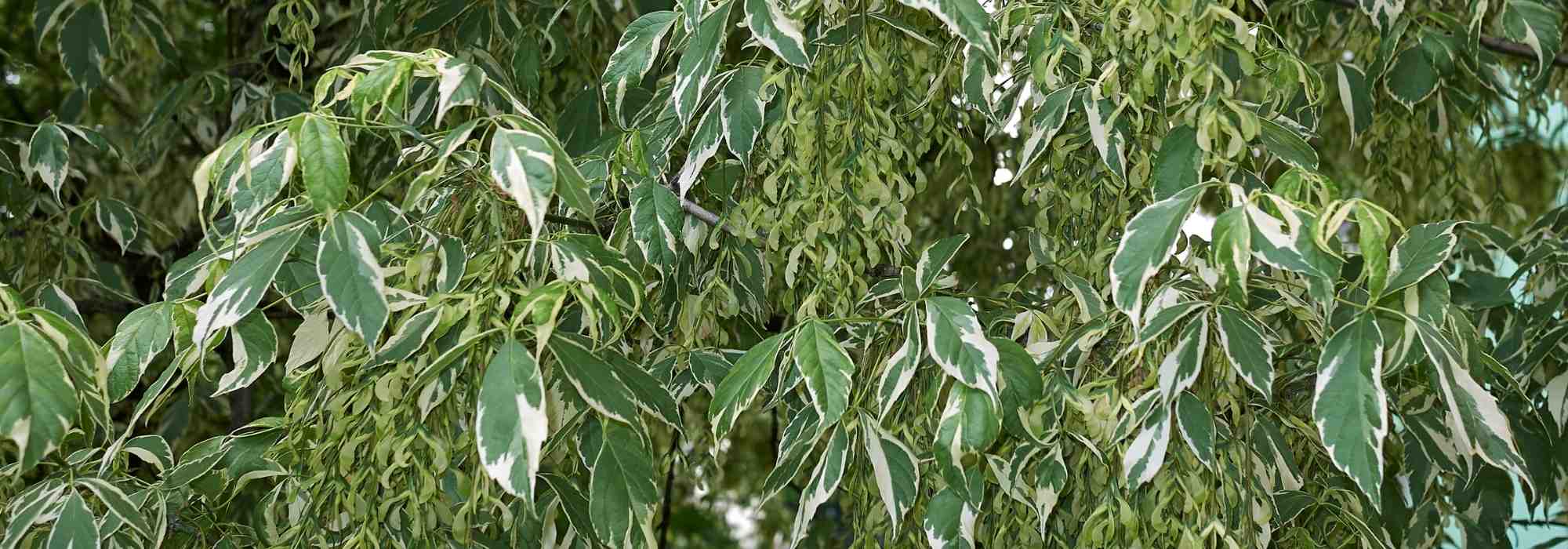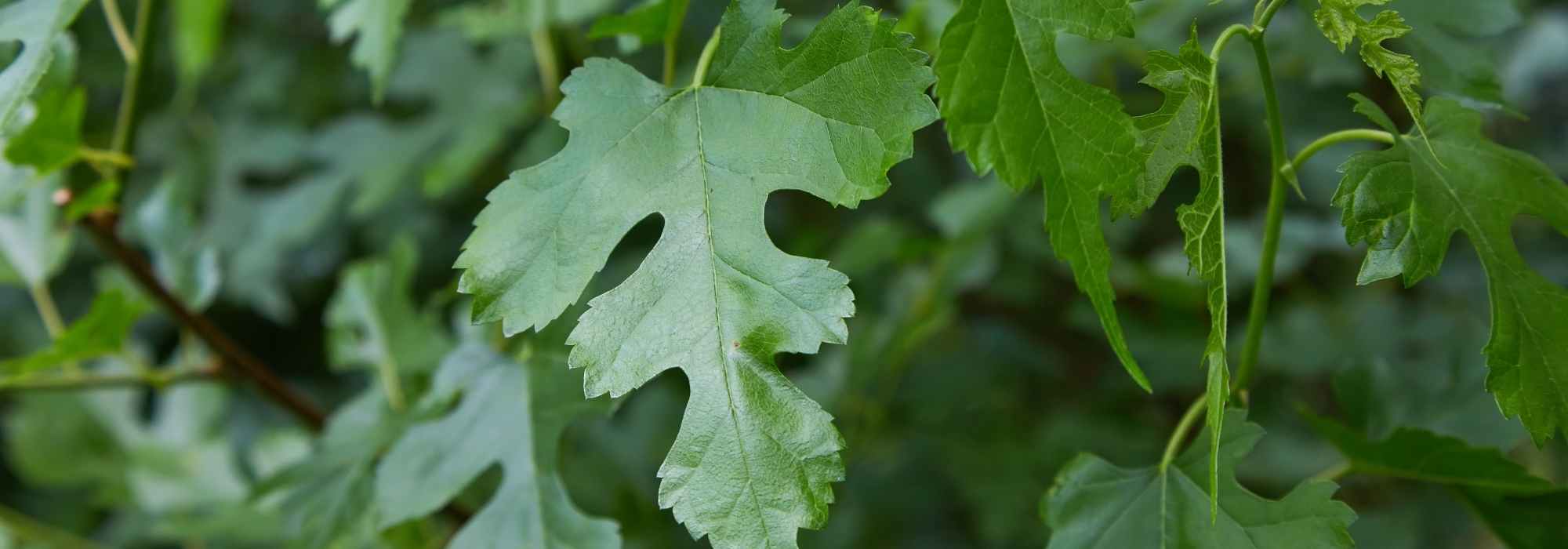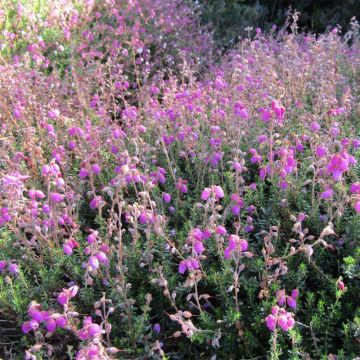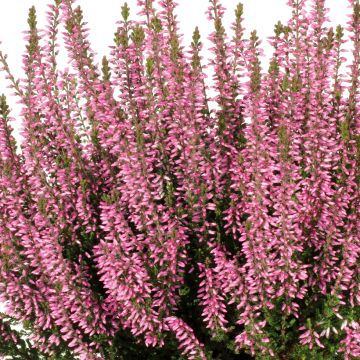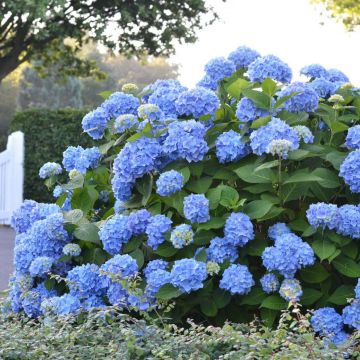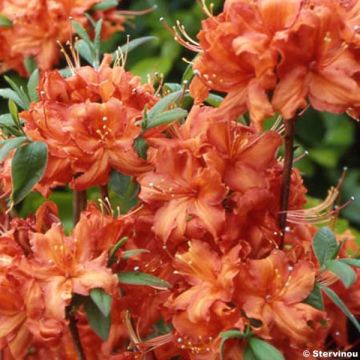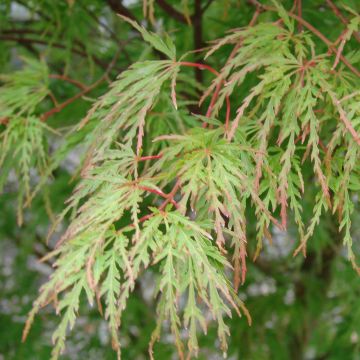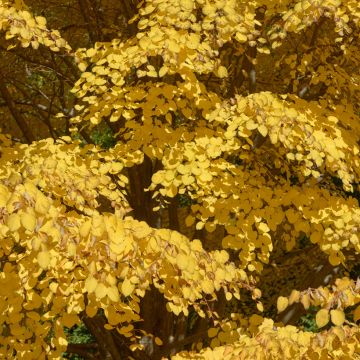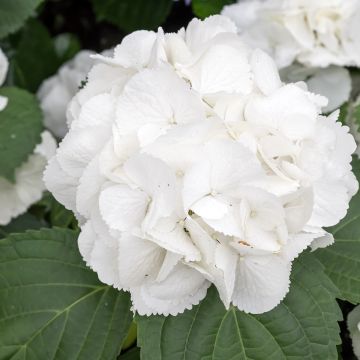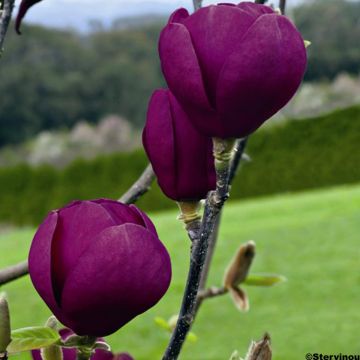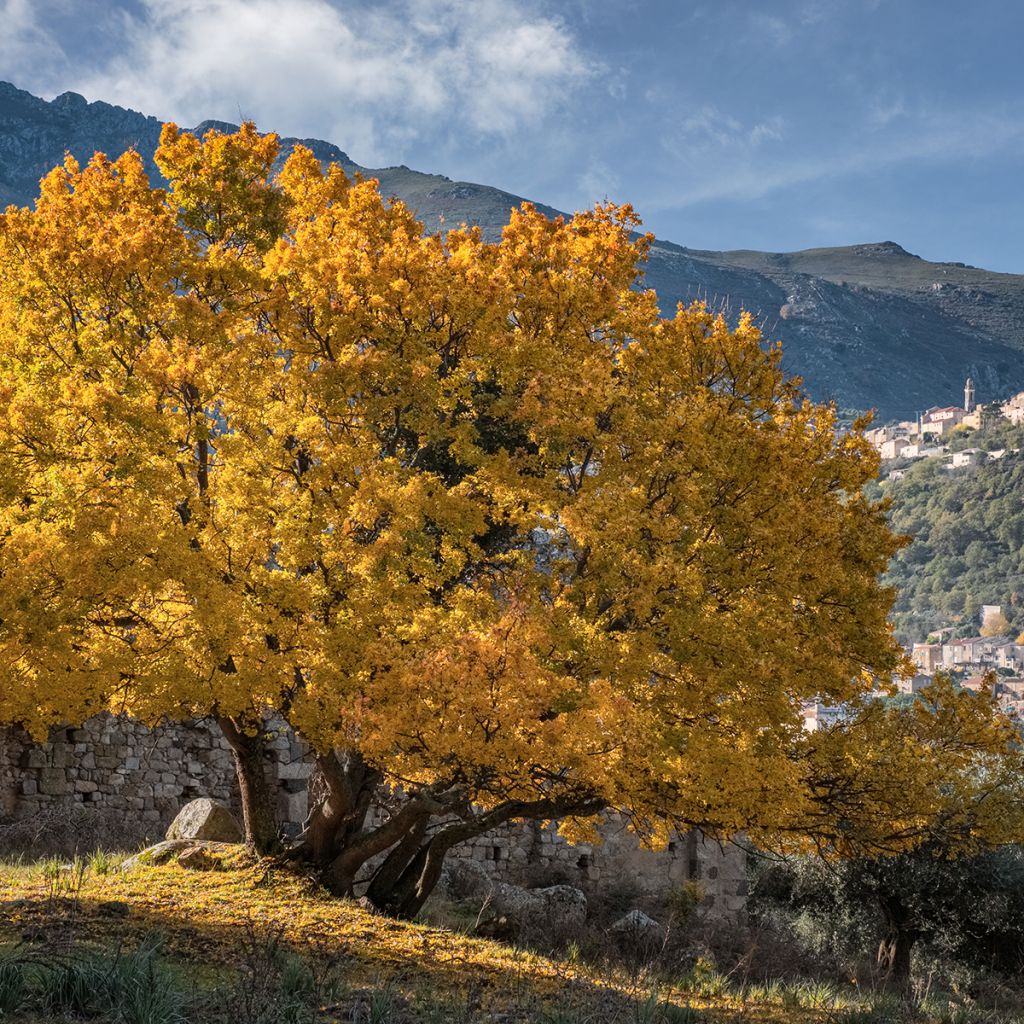

Acer monspessulanum
Acer monspessulanum
Acer monspessulanum
Montpellier Maple
Plant arrived in a large bucket of beautiful quality, large size 60 to 80 cm, well balanced, very beautiful!
PLANTEURFOU, 22/09/2024
Special offer!
Receive a €20 voucher for any order over €90 (excluding delivery costs, credit notes, and plastic-free options)!
1- Add your favorite plants to your cart.
2- Once you have reached €90, confirm your order (you can even choose the delivery date!).
3- As soon as your order is shipped, you will receive an email containing your voucher code, valid for 3 months (90 days).
Your voucher is unique and can only be used once, for any order with a minimum value of €20, excluding delivery costs.
Can be combined with other current offers, non-divisible and non-refundable.
Why not try an alternative variety in stock?
View all →This plant carries a 24 months recovery warranty
More information
We guarantee the quality of our plants for a full growing cycle, and will replace at our expense any plant that fails to recover under normal climatic and planting conditions.
Would this plant suit my garden?
Set up your Plantfit profile →
Description
Acer monspessulanum, also known as the Montpellier Maple, is a species that blazes in autumn, often accompanied by the evergreen oak or the pubescent oak. It is a maple of modest stature and slow growth, more shrubby than bushy when young. It is recognised by its small, leathery, three-lobed leaves, which are fairly shiny green. This maple is very hardy and resistant to wind and thrives in full sun or partial shade, in well-drained soil, dry in summer and even rocky and limestone.
The Montpellier Maple belongs to the botanical family Sapindaceae (which has incorporated the former family of maples, Aceraceae). It is a deciduous species native to the Mediterranean region. When it grows with the field maple (Acer campestre) the two species hybridise very easily. This maple can live up to 150 years. Its hard wood is used in carpentry and by turners or as firewood.
Acer monspessulanum shows a variable habit and size depending on its habitat and growing conditions in a garden. On rocky and dry soils, it sometimes forms a large shrub with several trunks, sometimes a tree with dark bark and a wide and dense crown. Its highly branched canopy is initially upright, then it becomes rounded with age. With slow to medium growth it usually reaches 5 to 6 m high and 3 to 4 m wide. Some specimens can reach 15 m in rich and not too dry soil. The foliage of this maple is deciduous, appearing in spring and falling in autumn. Its leaves are opposite on the branches and have a leathery texture. They measure 5 to 6 cm in length and are carried by a long petiole. Each leaf has 3 entire lobes, a slightly shiny dark green on the upper side. In autumn, they take on shades of gold, orange, or coppery red.
The Montpellier Maple blooms in April or May, before or during leaf emergence. It is a monoecious species, meaning that there are separate male and female flowers on the same plant. They are greenish-yellow and grouped in small clusters or corymbs. The female flowers have a shorter and usually thicker petiole than the male flowers. The flowers are nectar-rich and pollination is carried out by bees and other pollinators. The fruits are winged samaras, pendulous and grouped in pairs.
In the garden, the Montpellier Maple can be used as a specimen or in a natural grove, especially with the holm oak, the smooth oak, and the flowering ash (Fraxinus ornus). It can also be associated, in a country hedge, with deciduous spindle trees (Euonymus alatus, E. europaeus 'Red Cascade'), the Flame Smokebush, hawthorns (Crataegus), and ornamental crabapples (Malus). In a garrigue garden, this maple can accompany phillyreas, the terebinth pistachio, laurustinus, the mastic tree, and the Italian buckthorn (Rhamnus alaternus).
Acer monspessulanum in pictures


Plant habit
Flowering
Foliage
Botanical data
Acer
monspessulanum
Sapindaceae
Montpellier Maple
Mediterranean
Other Acer - Maple tree
View all →Planting and care
Acer monspessulanum is best planted in early spring or autumn in well-drained, slightly acidic to limestone soil, preferably in a sunny location. Stony or sandy soils, poor and very dry in summer, are well tolerated. Water during the first two summers following planting, especially in southern regions. Once well-rooted, this maple tree will do without watering, even in the driest regions. Its resistance to wind and frost is excellent: it withstands temperatures of 20 °C and above, in well-drained soil.
Planting period
Intended location
Care
Planting & care advice
-
, onOrder confirmed
Reply from on Promesse de fleurs
Similar products
Haven't found what you were looking for?
Hardiness is the lowest winter temperature a plant can endure without suffering serious damage or even dying. However, hardiness is affected by location (a sheltered area, such as a patio), protection (winter cover) and soil type (hardiness is improved by well-drained soil).

Photo Sharing Terms & Conditions
In order to encourage gardeners to interact and share their experiences, Promesse de fleurs offers various media enabling content to be uploaded onto its Site - in particular via the ‘Photo sharing’ module.
The User agrees to refrain from:
- Posting any content that is illegal, prejudicial, insulting, racist, inciteful to hatred, revisionist, contrary to public decency, that infringes on privacy or on the privacy rights of third parties, in particular the publicity rights of persons and goods, intellectual property rights, or the right to privacy.
- Submitting content on behalf of a third party;
- Impersonate the identity of a third party and/or publish any personal information about a third party;
In general, the User undertakes to refrain from any unethical behaviour.
All Content (in particular text, comments, files, images, photos, videos, creative works, etc.), which may be subject to property or intellectual property rights, image or other private rights, shall remain the property of the User, subject to the limited rights granted by the terms of the licence granted by Promesse de fleurs as stated below. Users are at liberty to publish or not to publish such Content on the Site, notably via the ‘Photo Sharing’ facility, and accept that this Content shall be made public and freely accessible, notably on the Internet.
Users further acknowledge, undertake to have ,and guarantee that they hold all necessary rights and permissions to publish such material on the Site, in particular with regard to the legislation in force pertaining to any privacy, property, intellectual property, image, or contractual rights, or rights of any other nature. By publishing such Content on the Site, Users acknowledge accepting full liability as publishers of the Content within the meaning of the law, and grant Promesse de fleurs, free of charge, an inclusive, worldwide licence for the said Content for the entire duration of its publication, including all reproduction, representation, up/downloading, displaying, performing, transmission, and storage rights.
Users also grant permission for their name to be linked to the Content and accept that this link may not always be made available.
By engaging in posting material, Users consent to their Content becoming automatically accessible on the Internet, in particular on other sites and/or blogs and/or web pages of the Promesse de fleurs site, including in particular social pages and the Promesse de fleurs catalogue.
Users may secure the removal of entrusted content free of charge by issuing a simple request via our contact form.
The flowering period indicated on our website applies to countries and regions located in USDA zone 8 (France, the United Kingdom, Ireland, the Netherlands, etc.)
It will vary according to where you live:
- In zones 9 to 10 (Italy, Spain, Greece, etc.), flowering will occur about 2 to 4 weeks earlier.
- In zones 6 to 7 (Germany, Poland, Slovenia, and lower mountainous regions), flowering will be delayed by 2 to 3 weeks.
- In zone 5 (Central Europe, Scandinavia), blooming will be delayed by 3 to 5 weeks.
In temperate climates, pruning of spring-flowering shrubs (forsythia, spireas, etc.) should be done just after flowering.
Pruning of summer-flowering shrubs (Indian Lilac, Perovskia, etc.) can be done in winter or spring.
In cold regions as well as with frost-sensitive plants, avoid pruning too early when severe frosts may still occur.
The planting period indicated on our website applies to countries and regions located in USDA zone 8 (France, United Kingdom, Ireland, Netherlands).
It will vary according to where you live:
- In Mediterranean zones (Marseille, Madrid, Milan, etc.), autumn and winter are the best planting periods.
- In continental zones (Strasbourg, Munich, Vienna, etc.), delay planting by 2 to 3 weeks in spring and bring it forward by 2 to 4 weeks in autumn.
- In mountainous regions (the Alps, Pyrenees, Carpathians, etc.), it is best to plant in late spring (May-June) or late summer (August-September).
The harvesting period indicated on our website applies to countries and regions in USDA zone 8 (France, England, Ireland, the Netherlands).
In colder areas (Scandinavia, Poland, Austria...) fruit and vegetable harvests are likely to be delayed by 3-4 weeks.
In warmer areas (Italy, Spain, Greece, etc.), harvesting will probably take place earlier, depending on weather conditions.
The sowing periods indicated on our website apply to countries and regions within USDA Zone 8 (France, UK, Ireland, Netherlands).
In colder areas (Scandinavia, Poland, Austria...), delay any outdoor sowing by 3-4 weeks, or sow under glass.
In warmer climes (Italy, Spain, Greece, etc.), bring outdoor sowing forward by a few weeks.































